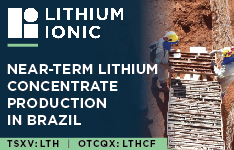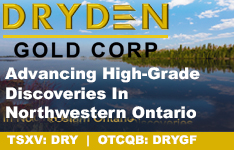The Life Sciences Report: Doug, you have been with Euro Pacific Canada for about a year and a half. During that time, the U.S. healthcare and biotechnology market has performed well by historic standards, yet your firm's name implies a focus on non-U.S. equities. If this is indeed true, can you explain why?
Doug Loe: Our firm is Canada-based, but offers broad-spectrum financial services to retail and institutional clients worldwide. The life sciences sector represents a relatively new focus. While our national headquarters are in Toronto, we have an office in Tokyo, where we have strong relationships with Japanese pharmaceutical and medical technology firms, and with regional investors.
We do focus on Canadian healthcare equities rather than international (and specifically U.S.) healthcare equities for a few reasons, but we are not prohibited from covering non-Canadian firms. In fact, many of our coverage stocks happen to be dual-listed on a U.S. exchange, typically the NASDAQ, since it is the most appropriate platform in terms of garnering the most investor exposure. Dual-listed stocks within our coverage universe include drug developers like Cardiome Pharma Corp. (CRME:NASDAQ; COM:TSX) and Tekmira Pharmaceuticals Inc. (TKMR:NASDAQ; TKM:TSX), specialty pharma/nutritional supplement developers like Cipher Pharmaceuticals Inc. (CPHR:NASDAQ; CPH:TSX) and Neptune Technologies & Bioressources Inc. (NEPT:NASDAQ; NTB:TSX), and medtech firms Novadaq Technologies Inc. (NVDQ:NASDAQ) and Neovasc Inc. (NASDAQ:NVCN).
TLSR: With the U.S. biotech sector so strong, can you tell us why investors might want to look to Canadian life sciences for investment options?
DL: I'll start with a short history lesson, to provide context for just how deeply committed to life sciences the Canadian economy has been.
The Canadian life sciences industry is older than generally realized, dating back to the late 1890s, when pharmacist Charles Frosst founded one of Canada's first pharmaceutical distributors and manufacturers. Charles E. Frosst & Co. was acquired by Merck & Co. Inc. (MRK:NYSE) in the 1960s to form Merck Frosst, a research and development operation known as global leader in inflammation research. The research center was shut down a few years ago. Merck Frosst focused on leukotriene biology specifically, developing and commercializing leading anti-allergy medications including leukotriene analog drug Singulair (montelukast).
Canada established its "street cred" in infectious disease treatment in the early 1900s, when the Connaught Laboratories were established as a spinout of the University of Toronto to produce diphtheria and tetanus vaccines. Connaught worked with Jonas Salk in the 1950s to produce a safe and attenuated polio vaccine, and was central to the production of next-generation polio vaccine formulations, as well as methods for producing effective vaccines against measles and influenza. If you haven't contracted a fatal infectious disease recently, thank a Canadian.
And every diabetes drug developer owes a debt of gratitude to Canadians Frederick Banting and Charles Best for their Nobel Prize-winning work on isolating insulin in its active form, and then demonstrating its blood glucose-modulating activity in humans back in the 1920s.
"A key factor in Canada's healthcare history is that we have a critical mass of successful firms."
The other key factor in Canada's healthcare history is that we have a critical mass of successful firms—firms that have either achieved clinical or regulatory success for lead technologies or have locked in shareholder returns on acquisition. Our most successful public companies, just based on takeout valuation, include Biochem Pharmaceutical Industries Ltd., which was acquired by Shire Plc (SHPGY:NASDAQ; SHP:LSE) in 2000 for US$4 billion (US$4B). Ocular drug developer QLT Inc. (QLTI:NASDAQ) redefined its strategy when it divested wet age-related macular degeneration photodynamic therapy Visudyne (verteporfin) to Valeant Pharmaceuticals International Inc. (VRX:NYSE; VRX:TSX). Visudyne was, in its day, the most successfully launched eye disease drug in history, achieving peak sales of US$484 million ($484M) in 2005. Boston Scientific Corp. (BSX:NYSE) justifiably gets most of the credit for, and garners most of the economic upside from, the first-to-market paclitaxel-eluting coronary stent, Taxus. Taxus, if memory serves, generated sales exceeding US$500M in the first full quarter of U.S. sales. But British Columbia-based Angiotech Pharmaceuticals Inc. (now private) was the firm whose paclitaxel-eluting polymer made Taxus possible.
All that said, we understand the bias toward U.S. healthcare equities, which, collectively, have generated cumulative returns since Q4/08 of 450%–550%, depending on whether you use the NASDAQ Biotechnology Index or the NYSE ARCA Biotechnology Index. It is undeniably true that bellwether biotech firms like Celgene Corp. (CELG:NASDAQ) and Gilead Sciences Inc. (GILD:NASDAQ) and Biogen Idec Inc. (BIIB:NASDAQ) have generated substantial returns over this timeframe, in each case with valuation driven materially by revenue growth from recently launched medical products—Revlimid (lenalidomide) for Celgene, Sovaldi (sofosbuvir) for Gilead, and Tecfidera (dimethyl fumarate) for Biogen Idec.
We would be hard-pressed to identify drug developers in our Canadian coverage universe generating returns based on new product launches in recent quarters, but when returns are not achievable by blockbuster drug development, Canadian healthcare stocks generate them in niche healthcare markets. A number of our coverage stocks did that over the last few years.
More recently, we have seen two distinct waves of merger-and-acquisition (M&A) activity lock in value within our coverage universe—in fact, across all sectors, without any one specific theme driving activity other than attractive valuation for the acquirer as determined by the acquiree. In 2008, we "lost" the cancer antibody developer Arius Research Inc. to Roche Holding AG (RHHBY:OTCQX), cryoablation developer CryoCath Technologies Inc. to Medtronic Inc. (MDT:NYSE), gastrointestinal disease drug developer Axcan Pharma to Texas Pacific Group (TGP Capital; private), and radiopharmaceutical/contract manufacturing hybrid firm Draxis Health Inc. to Jubilant Organosys Ltd., all at premium valuations to those ascribed by public markets at the time.
The M&A floodgates opened wide again in 2013, when we "lost" another basket of coverage stocks, including myelofibrosis drug developer YM BioSciences Inc. to Gilead, the laboratory services provider CML HealthCare Inc. to its main Canadian peer LifeLabs Medical Laboratory Services (private), specialty pharmaceutical firm Paladin Labs Inc. to Endo International, and infectious disease immune plasma producer Cangene Corp. to U.S.-peer Emergent BioSolutions Inc (EBS:NYSE).
I'd like to make a couple points on this acquisition activity. First, we believe the activity establishes a critical mass of attractive Canadian public healthcare equities for which value was locked in on acquisition. By achieving critical mass, we believe Canadian healthcare has established itself as a sector meriting institutional client interest, and not just from specialty funds. Second, it is clear from the characteristics of the acquired stocks that there were few themes tying these firms together, other than that they were deemed acquirable at about the same time.
This does enhance the level of complexity that investors must endure to achieve any weighting in the sector. It reflects a major theme in our coverage—that being that the space is an exceedingly eclectic one, one that requires company-specific analysis to fully understand how returns will be generated, and over what timeframe.
Canada belongs in any conversation that seeks to identify the leading nations in global healthcare—if not at the top of the list, a position we concede to our U.S. neighbors, certainly in the team photo.
TLSR: The Canadian life sciences sector saw cumulative market value for Toronto Stock Exchange (TSX)-listed stocks appreciate markedly within the last year or two. Are there any specific factors driving this performance, and if so, are they sustainable?
DL: We believe that most of the market value appreciation generated in TSX-listed healthcare equities has been generated on two fronts, predominantly in specialty pharmaceuticals but also in pharmaceutical benefits management, for which the representative stock on the TSX is Catamaran Corp. (CTRX:NASDAQ). Catamaran is now a U.S. firm in most respects, other than its legacy Canadian listing, but the company has Canadian roots as SXC Health Solutions, before the merger with Catalyst Health Solutions in 2012.
"When returns are not achievable by blockbuster drug development, Canadian healthcare stocks generate them in niche healthcare markets."
Separately, we saw strong performance in plasma products development, as reflected in the performance of Quebec-based ProMetic Life Sciences (PLI:TSE). ProMetic's valuation was driven in part by expectations that the firm's clinical and commercial pipelines in plasma-derived biopharmaceuticals can grow in parallel in 2015 and 2016.
If we consider cumulative absolute returns for these two stocks—Catamaran and ProMetic—since the beginning of 2012, and then add them to total returns over the same timeframe for the two largest TSX-listed specialty pharmaceutical firms, Valeant Pharmaceuticals and Concordia Healthcare Corp. (CXR:TSX), we get pretty close to a cumulative 36-month return of nearly $47B.
Moving beyond these specific stocks, we believe attractive investments exist across all sectors within the Canadian healthcare universe. But a long-standing investment thesis of ours is that notably robust returns are achievable specifically in the specialty pharmaceutical space and in medical technology development.
Starting with specialty pharmaceuticals, I suspect some of your readership may not know why the subsector is generating so much interest with institutional clients. Specialty pharmaceuticals are drug or biologics marketed to specialty physicians—to 'ologists' like gastroenterologists, cardiologists or neurologists—and not directly to general practitioners, as many drugs are. Specialty pharmaceuticals are, by definition, a more focused medical market, generating greater revenue on a per physician basis from deploying a more modest, more focused marketing team than would be required to market a broadly utilized chronic care drug or biologic.
But this characteristic in isolation would not drive investor interest without the unambiguously positive history of business success in this industry, including in Canada, and the substantial returns that have been generated.
Reflecting back a few years, Canadian investors generated impressive returns when Axcan Pharma was taken private in 2008—through various acquisitions it is now part of the specialty pharma giant Actavis Plc (ACT:NYSE). Investors also saw good returns when Biovail Corp., the Canadian drug formulation firm, merged with Valeant in 2010. And Paladin Labs was generating historically strong revenue and earnings before interest, taxes, depreciation and amortization (EBITDA) growth before it was scooped up by Endo. We assume Endo is quite pleased with the 45–50% EBITDA margin pharmaceutical sales that Paladin was, and presumably still is, generating. But the acquisition was ostensibly a tax expense mitigation strategy that has become increasingly common in recent healthcare M&A activity.
Fueled by positive perception of historic returns in specialty pharma, the sector continues to garner substantial investor interest. There are, in our view, at least three macro elements driving future achievable value. First, well-managed specialty pharma organizations can generate EBITDA margins and operating cash flow at levels rivaling—or even exceeding—those achievable in virtually all other business categories, even when compared to traditionally high-margin industries like oil exploration or computer technology development. EBITDA margins above 30% represent the norm, even for firms that sell off-patent, mature pharmaceuticals.
Second, an abundance of mature drug products are available for acquisition. Sanofi SA (SNY:NYSE) and Merck announced in recent months that sizable components of their off-patent product portfolios were available for sale. A well-capitalized product acquirer can grow EBITDA aggressively by acquisition in this environment, as Paladin Labs did in 1996–2013, and as next-generation peers are doing now. We should say though that product availability could be softening a bit now that GlaxoSmithKline (GSK:NYSE) has withdrawn from sale a basket of established products generating about US$1.7B in aggregate sales. We'll see if this is an industry signal or a Glaxo-specific signal on product availability.
Third, a product acquisition strategy can, by definition, generate substantial revenue/EBITDA growth without incurring the expense, or the risk, of clinical research and development, driving EBITDA margin even higher.
TLSR: Do you have any Canadian specialty pharmaceutical firms that investors should be tracking?
DL: The dominant TSX-listed firm in this space, by a considerable margin, is Valeant Pharmaceuticals. Independent of its thwarted efforts to acquire U.S. peer and Botox developer Allergan Inc. (AGN:NYSE)—now poised to be enveloped into another peer firm, Actavis—Valeant grew dramatically in recent years through acquiring both products and entire firms, and in so doing still sustained an EBITDA margin at or near industry highs.
The firm's most recent transactions of substance were the acquisition of the ophthalmology-focused firm Bausch & Lomb and the dermatology/cosmetics-focused Medicis Pharmaceutical Corp. After deals for both of these massive organizations, and others, were consummated over the last few years, Valeant still generated an EBITDA margin of 46% in Q3/14. Valeant has been trading in recent weeks at near 14x enterprise value-to-EBITDA, using 2015 consensus EBITDA estimates as the denominator. Valeant is arguably fairly valued at such an aggressive multiple, but we have no criticism on the growth strategy execution that has held the profitability metrics firm while sustaining an industry-leading pace of acquisition.
An emerging Valeant/Paladin-like firm that we follow is Concordia Healthcare, a relatively new entrant into the specialty pharmaceutical milieu but one that, in its brief history, has grown revenue/EBITDA substantially since going public in Q4/13. In fact, Concordia generated an EBITDA margin in Q3/14 of 58%, which was superior to Valeant's performance, though Concordia has a shorter track record of generating margins at that level.
"Canadian healthcare has established itself as a sector meriting institutional client interest."
Concordia's originally acquired product portfolio is a mix of assets from Japanese pharma firm Shionogi [4507:TSE]. New assets include the irritable bowel syndrome drug Donnatal (hyoscyamine sulfate, atropine sulfate, scopolamine sulfate and phenobarbital), acquired from Revive Pharmaceuticals. In an interesting juxtaposition of business strategies, Revive is trying to shed mature products to focus on its research and development (R&D) pipeline, while Concordia is trying to do the opposite, rather successfully in our view.
Concordia also acquired the epilepsy drug Zonegran (zonisamide) from Japanese giant Eisai Inc. (ESALF:OTCPK). The aforementioned products cumulatively contributed to the EBITDA margin. By coincidence, Concordia is valued at about 14x enterprise value-to-2015 consensus EBITDA as well, and we assume that, like its bellwether peer Valeant, Concordia intends to grow its pipeline with new product acquisitions.
We cover two smaller, emerging, specialty pharmaceutical firms, Cipher Pharmaceuticals and Merus Labs Inc. (MSL:TSE), both based in the greater Toronto area. Both are generating their own attractive EBITDA margins, though those margins were achieved in different ways.
Cipher, until recently, was focused on its own product development, and thus only recently qualified for specialty pharma status. Throughout most of its history, Cipher developed novel formulations of already approved drugs, like the blood triglyceride-lowering drug fenofibrate (Cipher's brand is Lipofen), the opioid-like pain drug tramadol (ConZip) and the vitamin A-analog acne drug isotretinoin (Absorica), using its licensed CIP drug delivery technology. Accordingly the firm was investing in its own R&D efforts, though at an extremely modest level.
All three drugs are meeting our expectations on prescription market share and royalty revenue, but the biggest-selling drug in the portfolio by far is Absorica, mostly because its CIP formulation is demonstrably superior to generic forms. The drug does not need to be ingested with a high-fat meal as others do, and failure to comply greatly mitigates effectiveness of drugs that have to be ingested in this way. By the end of Q3/14, Absorica's U.S. prescription market share was nearly 20%, and that was achieved while pricing Absorica at a premium to generic alternatives sold in the U.S.
Cipher's quarterly revenue and EBITDA are still far below what Concordia and Valeant routinely generate, but the firm's balance sheet is impeccable, with $47M in cash and no debt, so without any substantial working capital obligations, EBITDA and cash flow are essentially identical for the firm, both in the $5.1–5.2M range in Q3/14. Accordingly, Cipher has abundant financial flexibility to grow its product portfolio by acquisition, with an intense focus on dermatology.
Merus is distinct from Cipher in that it has grown its current portfolio by acquisition and not by internal development initiatives. We expect both firms to acquire pipeline, rather than develop it, in future periods. Moreover, most of Cipher's product sales are in North America, while Merus' sales for its two lead drugs are mostly in Europe, a highly fragmented market, and one where pricing flexibility tends to be more restrictive. But Europe is still a market where stable free cash flow can be generated.
In recent years, Merus acquired two mature drug assets from Novartis AG (NVS:NYSE). The first, acquired last year, is a urinary incontinence drug called Emselex (darifenacin), and the other, acquired last quarter, is the anticoagulation and stroke prevention drug Sintrom (acenocoumarol). Merus also sells a Clostridium difficile-targeted oral vancomycin formulation called Vancocin in Canada; Shire holds U.S. rights.
Merus' financial results in Q3/14 included only Emselex and Vancocin, but even then revenue and EBITDA were impressive, at $7.2M and $3.9M, respectively, and both measures will grow appreciably when Sintrom hits the income statement next quarter. We have Buy ratings on both Cipher and Merus, and believe that both firms can grow by acquisition.
TLSR: We have been tracking efforts to curtail the Ebola outbreak in western Africa and elsewhere. There are several publicly traded firms focused on new therapy development. Can you comment on how Ebola is impacting life sciences valuations overall, and how it is specifically impacting the Canadian healthcare sector?
DL: The Ebola outbreak in western Africa has been driving new focus on R&D efforts both locally and in North America, where new product development has been most active. Before the most recent outbreak in West Africa, Ebola emerged in sporadic outbreaks. The first cases were identified in 1976, and the largest number of afflicted subjects prior to 2013/14 was limited to 425 cases before the outbreak was contained, far below the levels of afflicted subjects during the current outbreak, with more than 17,000 cases reported earlier this month.
There are no FDA-approved cures for the disease, though several companies with strong preclinical data have initiated Phase 1 clinical trials. One of the more prominent life sciences firms with clinical-stage Ebola-targeting therapies is under coverage, British Columbia-based Tekmira Pharmaceuticals. The company is a short-interfering RNA (siRNA) drug developer whose product, TKM-Ebola, is currently in Phase 1 clinical testing.
We had a singularly positive view on Tekmira back in 2012, when it successfully settled a trade secret misappropriation case with partner Alnylam Pharmaceuticals Inc. (ALNY:NASDAQ). After that, the stock was trading at its cash value and nothing more. Returns have exceeded 1,700% since Q4/12, though some pullback has transpired in recent weeks.
TKM-Ebola is partnered with the U.S. government in a biodefense-focused product development and product stockpiling alliance valued at $140M, but future product sales to the stockpile should drive cumulative deal value far higher during the product life cycle. The deal was consummated long before the western Africa breakout, and paradoxically, deal economics are virtually independent of current Ebola epidemiology—the drug is not FDA-approved and won't be for at least a couple of years, if not more.
We believe TKM-Ebola has been prescribed for compassionate use in western Africa and is officially available under special access in the U.S. In the meantime, we expect Tekmira to resume Phase 1 testing next year.
Tekmira has multiple siRNA projects that contribute to our overall valuation, including the hepatitis B drug TKM-HBV and the cancer drug TKM-PLK1, both of which are advancing well in the pipeline. Another preclinical candidate targets liver disorders, for which gene expression knockdown is predicted to confer therapeutic benefit.
A few other Ebola drug developers that we follow are not traded on the TSX, but we track them as part of our peer group analysis of Tekmira and its pipeline. The private firm Mapp Biopharmaceuticals Inc. has garnered attention in recent months for its lead antibody drug ZMapp, which was developed in collaboration with the Public Health Agency of Canada (PHAC). ZMapp was one of the first not-yet-approved therapies deployed for frontline use in treating U.S. Ebola patients. ZMapp is a cocktail of three distinct monoclonal antibodies targeting distinct Ebola epitopes, hopefully eradicating the viral infection synergistically.
"The Canadian life sciences space is an exceedingly eclectic one."
The race to develop an Ebola vaccine is also garnering interest from global pharmaceutical firms, particularly since Mapp reported depleted antibody supply earlier in 2014. The list of publicly traded Ebola therapy developers basically included Tekmira and its RNA drug development peer Sarepta Therapeutics Inc. (SRPT:NASDAQ) as recently as a year ago. The list is now long and growing, and includes NewLink Genetics Corp. (NLNK:NASDAQ.GM). NewLink's vesicular stomatitis virus-based vaccine rVSV-EBOV, developed with the PHAC, entered a 40-patient Phase 1 study in September 2014, but while data initially reported for the first 34 patients enrolled showed the vaccine to be reasonably safe, the trial was transiently halted last week due to joint pain reported in four vaccinated subjects. This vaccine is being developed in partnership with Merck, which paid NewLink US$50M in upfront and contingent cash payments in exchange for regional distribution rights once clinical testing concludes, a highly lucrative economic transaction for a rare orphan indication, even while Ebola is becoming less orphanlike with each new case.
GlaxoSmithKline also reported safety data for its chimpanzee adenovirus-based Ebola vaccine. In a 20-patient safety study, data showed a strong and dose-dependent immune response to the vaccine, a sufficiently robust observation that was published in the New England Journal of Medicine last month.
We are also aware of small molecule development in Ebola, with Chimerix Inc.'s (CMRX:NASDAQ) brincidofovir and BioCryst Pharmaceuticals Inc.'s (BCRX:NASDAQ) BCX4430, and we'll see where the ground eventually settles underneath these two early-stage assets. But we remain resolute in our view that Tekmira's TKM-Ebola benefits from the strain specificity that an siRNA therapy can engender, thus allowing for siRNA sequence modification as viral mutations arise, a key advantage for a stockpile therapy in our view. We are equally resolute in our view that Tekmira's trading activity is driven by its fame, but its underlying market value is driven by substance and by the strong pathophysiological underpinnings of appropriately delivered siRNAs in general.
TLSR: You mentioned medical technology as one of the key valuation drivers for Canadian healthcare. Can you describe specific firms that you are following, and provide reasons for why you believe returns are notably strong in Canada, as opposed to the U.S., where a broader array of investment candidates exist?
DL: We have seen substantial returns and expect strong performance to continue in medical technology development. To be clear, this was not a strong sector within Canada until recently, though the drug-eluting stent developer Angiotech and the cryoablation catheter developer CryoCath are notable exceptions. Both were instrumental in developing cardiovascular devices that are still category leaders in interventional cardiology and cardiac ablation, respectively.
Firms that we formally track, and anticipate sustained operational performance from in future years, include Ontario-based Novadaq Technologies, a fluorescence imaging technology developer that has effectively partnered its SPY platform, and demonstrated the platform's efficacy in multiple, niche, surgical markets. The platform may actually be indispensible for conferring standard of care in those markets, as supported by medical evidence. In breast reconstruction, colorectal or esophageal resection, gall bladder surgery, lymph node imaging and other types of surgery, SPY imaging reduces complication rates and improves patient outcomes. The stock was one of our official Top Picks this year, until it rapidly ascended to our target. We shifted our rating to a Hold in Q2/14, but we have abundant confidence that Novadaq's SPY can generate substantial revenue growth both in system sales and in recurring procedural volume-based revenue in global markets. The firm generated record quarterly revenue of US$12.1M in Q3/14 sales, in what would normally be a seasonally soft quarter for the firm.
We also hold BC-based Neovasc in high regard. The company is developing a leading mitral valve replacement technology called Tiara, which is as advanced as any comparable device developed by far larger peers. Tiara can be deployed using a delivery catheter instead of through open heart surgery, and thus has potential to be an effective minimally invasive—well, as minimally invasive as cardiovascular surgery can be—treatment for mitral regurgitation. Neovasc has a separate technology used to treat chronic refractory angina called Reducer, and we expect both Tiara and Reducer to be well advanced in new human studies by 2015.
The other stock we are watching closely is the low-temperature sterilization system developer TSO3 Inc. (TOS:TSX; TSTIF:OTCPK), whose Sterizone VP4 platform is nearing regulatory resolution in the U.S. We expect the firm to consummate a global distribution alliance with one of the four leading sterilization technology developers worldwide, one of which includes Swedish infectious disease giant Getinge AB (GETI.B-STO), with whom TSO3 already has signed a letter of intent. Assuming regulatory risk can be resolved in the next quarter or two, we expect TSO3 to rapidly transition from being a technology developer to a technology marketer, with the revenue and EBITDA growth that this normally entails.
TLSR: Doug, thanks for your time.
 Douglas Loe, healthcare equity analyst with Euro Pacific Canada, brings more than a decade of experience to financial analysis in the global drug development, medical technology, healthcare services and specialty pharmaceutical sectors. Loe has been recognized as one of Canada's top healthcare analysts by the StarMine Analysts Awards. With his extensive knowledge of the healthcare industry, Loe analyzes and publishes his views on trends in the sector and interprets them within the context of a diversified suite of companies under coverage, many of which locked in substantial returns for investors over the last several quarters. He holds a Ph.D. in biochemistry.
Douglas Loe, healthcare equity analyst with Euro Pacific Canada, brings more than a decade of experience to financial analysis in the global drug development, medical technology, healthcare services and specialty pharmaceutical sectors. Loe has been recognized as one of Canada's top healthcare analysts by the StarMine Analysts Awards. With his extensive knowledge of the healthcare industry, Loe analyzes and publishes his views on trends in the sector and interprets them within the context of a diversified suite of companies under coverage, many of which locked in substantial returns for investors over the last several quarters. He holds a Ph.D. in biochemistry.
Want to read more Life Sciences Report interviews like this? Sign up for our free e-newsletter, and you'll learn when new articles have been published. To see a list of recent interviews with industry analysts and commentators, visit our Streetwise Interviews page.
DISCLOSURE:
1) George S. Mack conducted this interview for Streetwise Reports LLC, publisher of The Gold Report, The Energy Report, The Life Sciences Report and The Mining Report, and provides services to Streetwise Reports as an independent contractor. He owns, or his family owns, shares of the following companies mentioned in this interview: None.
2) The following companies mentioned in the interview are sponsors of Streetwise Reports: None. The companies mentioned in this interview were not involved in any aspect of the interview preparation or post-interview editing so the expert could speak independently about the sector. Streetwise Reports does not accept stock in exchange for its services.
3) Douglas Loe: I own, or my family owns, shares of the following companies mentioned in this interview: Cardiome and TSO3. I personally am, or my family is, paid by the following companies mentioned in this interview: None. My company has a financial relationship with the following companies mentioned in this interview: Euro Pacific Canada underwrote an equity offering within the last twelve months for Neptune Technologies and Bioressources. Euro Pacific Canada has a financial relationship with Merus Labs. I was not paid by Streetwise Reports for participating in this interview. Comments and opinions expressed are my own comments and opinions. I determined and had final say over which companies would be included in the interview based on my research, understanding of the sector and interview theme. I had the opportunity to review the interview for accuracy as of the date of the interview and am responsible for the content of the interview.
4) Interviews are edited for clarity. Streetwise Reports does not make editorial comments or change experts' statements without their consent.
5) The interview does not constitute investment advice. Each reader is encouraged to consult with his or her individual financial professional and any action a reader takes as a result of information presented here is his or her own responsibility. By opening this page, each reader accepts and agrees to Streetwise Reports' terms of use and full legal disclaimer.
6) From time to time, Streetwise Reports LLC and its directors, officers, employees or members of their families, as well as persons interviewed for articles and interviews on the site, may have a long or short position in securities mentioned. Directors, officers, employees or members of their families are prohibited from making purchases and/or sales of those securities in the open market or otherwise during the up-to-four-week interval from the time of the interview until after it publishes.









































